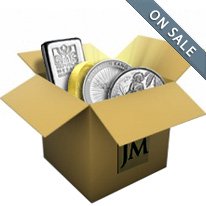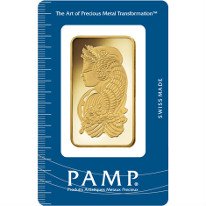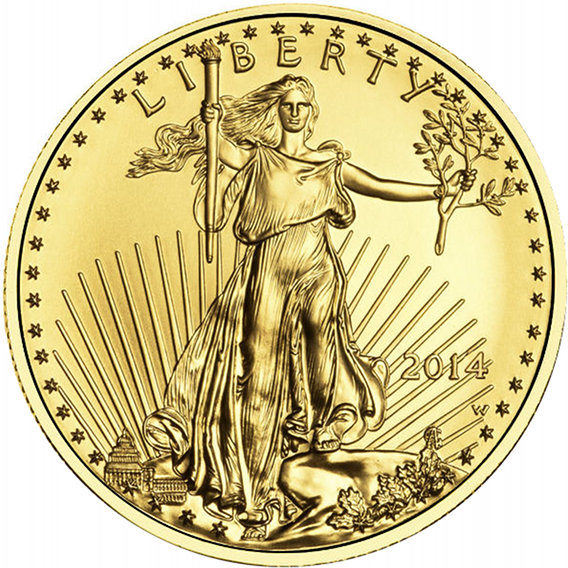Free Gold Price Widget For Your Website
This feature is only supported in the desktop browsers. Please visit this page in your desktop browser to retrieve the widget.
Share live gold prices with your website followers or on your blog, using our free gold price widget. To get started, please select one of the size dimensions from the drop-down menu below, and copy the code from the Widget Code text box and paste it into the desired position in your page. If you have any trouble, please contact us at support@jmbullion.com.
Widget Preview
Widget Code
Gold Prices in Thai Baht
The price of gold is always on the move, and the yellow metal is traded all over the world. Although gold is often quoted in U.S. Dollars, it can be quoted in and transacted in any currency. If you are in Thailand, for example, you would see gold quoted per ounce, gram and kilo in the local currency.
The Thai Baht is the official currency of Thailand. Like many other currencies, the Thai Baht can be subdivided into 100 smaller currency units.
Similar to the British Pound, the baht originally was a unit of mass. The value of the baht was originally expressed using a corresponding amount of silver now known to be 15 grams. The baht was a piece of solid silver and part of a system of silver pieces in various weights.
From 1956 to 1973, the baht was pegged to the U.S. Dollar at a rate of 20.8 baht to one dollar. Then the exchange rate was adjusted to 20 baht to one dollar until the late 1970s. Thailand eventually re-pegged its currency to the dollar again at a ratio of 25 to 1 from 1984 to 1997. The currency was then floated and lost 50% of its value. The baht has since recovered a significant amount of value versus the dollar from its lowest point reached in the late 1990s.
The Thai Baht is issued and controlled by the Bank of Thailand. The Bank of Thailand was established in 1942 and is in charge of all central banking functions which include currency management and conducting of monetary policy.
Gold Pricing in Thai Baht
The gold market can see periods of sideways or range-bound price action as well as periods of extreme price swings and market volatility. The two primary sources of demand for gold are investment demand and industrial demand. Some of the potential influences on the price of gold may include central bank purchases or sales, inflation, currency markets, jewelry demand, investment demand and geopolitical issues.
The bank of Thailand, like many other central banks, holds part of its reserves in gold. According to Tradingeconomics.com, the bank was holding 152.41 tons of gold as of the fourth quarter of 2016. Central banks may buy and hold gold to diversify their reserves. Gold may also potentially add credibility to the nation’s currency.
The Royal Thai Mint
The Royal Thai Mint was first established in 1860 and is part of the nation’s treasury department. The mint has been located at numerous places since its inception. The mint is responsible for the production of Thai coinage, medals and Royal Thai orders and decorations.
The Economy of Thailand
Thailand is an export-oriented newly industrialized country. Thailand has one of the largest economies in Southeast Asia, and its exports account for the majority of the country’s GDP.
Thailand is a major exporter of rice, shrimp and other seafood. The country’s fishing industry is a large employer, and fishing along with forestry and agriculture make a significant contribution to the nation’s GDP.
Electronics are Thailand’s largest export sector. The country is one of the largest manufacturers of hard disc drives, although the nation has seen declines in manufactured electronics recently as companies relocate operations to locations with lower labor costs.
Thailand’s main export markets include North America, Europe and Japan as well as other regional partners.
According to the World Bank, the Thai economy is set to grow at a rate of 3.2 percent in 2017, up 2.8 percent from last year. The primary catalysts for growth are private consumption and public investments. The nation’s tourism sector has also been strong, and may also be a major contributing factor.
The aging of Thailand’s working age population could become an issue for its economy in the years ahead, and the country will have to come up with some new sources of growth.
As the nation’s economy expands, demand for gold could potentially rise. Additional economic strength could also have a strengthening effect on the nation’s currency.
World Gold Prices
- Arab Emirates Gold Price
- Australia Gold Price
- Brazil Gold Price
- Canada Gold Price
- Chile Gold Price
- China Gold Price
- Czech Republic Gold Price
- Denmark Gold Price
- Europe Gold Price
- Hong Kong Gold Price
- Hungary Gold Price
- India Gold Price
- Indonesia Gold Price
- Israel Gold Price
- Japan Gold Price
- Malaysia Gold Price
- Mexico Gold Price
- New Zealand Gold Price
- Norway Gold Price
- Pakistan Gold Price
- Philippines Gold Price
- Poland Gold Price
- Russia Gold Price
- Singapore Gold Price
- South Africa Gold Price
- South Korea Gold Price
- Sweden Gold Price
- Switzerland Gold Price
- Taiwan Gold Price
- Thailand Gold Price
- Turkey Gold Price
- United Kingdom Gold Price
- United States Gold Price










